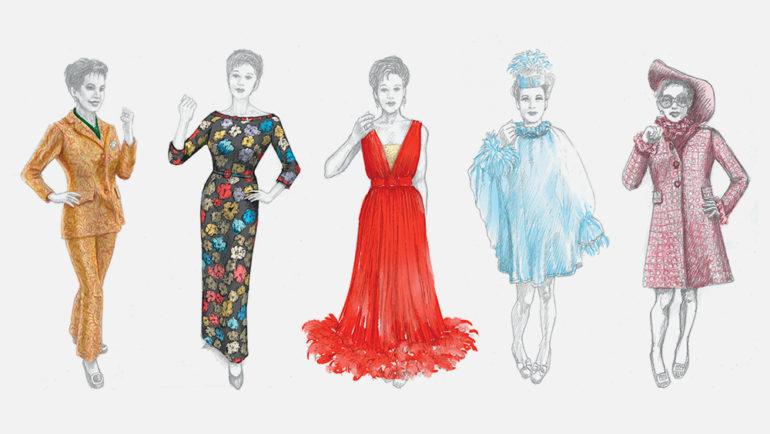Costume Designer Jany Temime Looked to the Colorful Past For ‘Judy’
By Jazz Tangcay
LOS ANGELES (Variety.com) – As costume designer on “Judy,” the biopic about Garland, Jany Temime kept one criteria in mind. “My question was, ‘What would Judy wear for that scene?’ That how I approached it,” says Temime, who also wanted to portray the difference between “the real Judy and the performer Judy.”
But instead of using replicas of the actor-singer’s iconic ensembles, Temime opted to create designs inspired by Garland’s wardrobe. To do so, Temime analyzed every look to understand why Garland chose it.
“She loved clothes. She has been working with the best designers in the world from the moment she entered Hollywood,’ explains Temime. “She was a woman with a huge fashion background. She’s a performer who wore the right thing to give the right impression.”
Filming in London allowed the costume designer to source Arabic, Indian and African prints to build the costumes and paint the picture of a strong woman.
The film kicks off in 1968, a low point in Garland’s life, when she was broke and fighting for custody of her children.
“You open the film with an image of strength. She’s in the shit, but she’s a strong woman,” says Temime, who dressed Garland (played by Renee Zellweger) in a bright orange pantsuit. “I wanted to use color in the beginning,” Temime says of the vibrant hue. “I thought green would be such great contrast. I used color [a lot] for her. It’s almost like the clothes are armor for her. By the end, those colors fade. She can’t afford her armor and the colors all fade by the end. It’s symbolic.”
Later, when Garland marries Mickey Deans, her fifth and last husband, Temime opted for a short, pale blue wedding dress that took cues from Garland’s original. A “clown feeling” added to the neckline, coupled with a feather-topped hat, showed “the ludicrous of it all,” she says. “That outfit was a crazy outfit. It has all the craziness of the ’60s, and this is a woman marrying a younger guy. It’s the last chance of happiness she gets.” Following her marriage, Garland is in what Temime describes as her “Mickey period” (“he gives her hope”), a time defined by looks driven by the latest fashions from Carnaby Street in London. “Suddenly she’s wearing mini dresses,” says Temime, who designed looks by influenced the era. “I took Judy Garland as an inspiration, as a model, and I tried to find the essence of what she was wearing.

